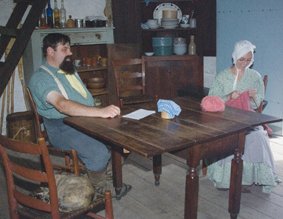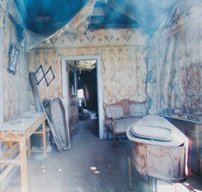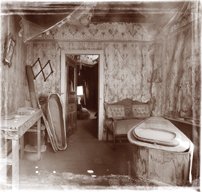Choosing ISO Settings
| If you're used to shooting with a compact digital camera, you've probably learned to stay away from anything but the lowest ISO settings, such as 100 or 200, because of noise problems associated with more light-sensitive ratings of 400 or higher. Luckily, digital SLRs are much better in this regard, and images shot at ISO settings of 400 and as high as 1600 are very usable. Why would you want to use these higher settings? There are two main reasons. The first is to give you more exposure options in low-light conditions, and the second is for creative techniques. ISO BasicsMost digital SLRs have a low-end ISO setting of 100 or 200, and the image quality is optimized for these settings. You see the least amount of noise when shooting at these settings because there is less of an electrical charge going to the sensor to capture the image than there would be at a higher ISO. This is a result of the increased heat and electrical activity required of the sensor to record the image data. Under normal lighting conditions and when using a flash, this is all fine. But when the light starts to fade, at low ISOs you find that you either can't get an exposure reading at all or the exposure (shutter speed) must be so slow that a sharp image isn't possible without a tripod. This is particularly problematic with low-end zoom lenses with small maximum apertures that come with many entry-level digital SLRs. In cases like this, it's time to increase the ISO setting of your camera. Like changing the exposure by adjusting the aperture or shutter speed, increasing the ISO works to add (or subtract) light to the image. It works a bit differently thoughrather than changing the depth of field, or the amount of time the shutter is open, increasing the ISO changes how sensitive the sensor is to the light that hits it during the exposure. Going from ISO 200 to ISO 400 doubles the sensor's sensitivity and gives you an additional stop of exposure latitude. In other words, if you have an exposure of 1/30 at f/5.6 with an ISO of 200, by changing to ISO 400 your new exposure will be 1/60 at f/5.6 or 1/30 at f/8. However, the downside is that the increased sensor sensitivity also increases noise, or grain, in the image. The image degradation caused by noise increases proportionally with each increase in ISO sensitivity. High ISO TechniquesIt might sound strange, but there are times when a high ISO setting is used intentionally to add noise, or grain, to the image. This is particularly useful when capturing black-and-white images in which you want to have an old-ish film look (Figure 2.22) that simulates grain. Figure 2.22. High ISO settings can be used to give a grainy look to images.
In the examples shown in Figure 2.23 and 2.24, I increased the speed to ISO 1250 to make the sensor much more sensitive to light, thus producing noise. As a color image it looks noisy (Figure 2.23), but after converting it to black and white (Figure 2.24) in Photoshop and giving it an edge treatment, it has a very effective vintage look that would have been more difficult to achieve without the added noise. Figure 2.23. In color, the noise doesn't work to this photo's advantage.
Figure 2.24. After converting to black and white and adding a vintage border, the noise from shooting at high ISO looks like it belongs.
|
EAN: 2147483647
Pages: 91


